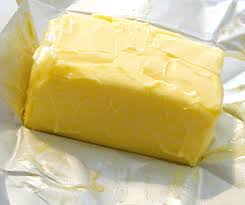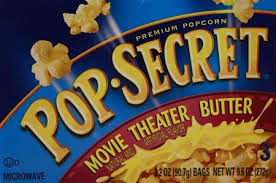Do you remember when margarine was suppose to be better than butter? Well, now what was good is now very bad – and it might be banned. But is this a case of government overreach, or is this a case of protecting the public against a bad additive? You decide.
Trans Fats
You have probably heard about trans fats, and how they are made by man, and are terribly bad for you. It is never quite that simple, because some trans fats are found in nature—in the stomachs of beef, sheep, goats, and deer—and are not all the man-made Frankenstein fats you may have been led to believe. But let’s go back in history.

The margarine many cardiologists were recommending to replace butter may have killed more people than butter ever will because of the trans fats
The world of science used to love trans fats. Stick margarine that resembled butter, shortening, and other trans fats were all the rage in the late 1960s and early 1970s. Doctors then recommended that people use margarine (the early ones made were almost entirely made of trans fat) instead of butter or other saturated fats, like bacon grease.
Medicine has since discovered that trans fats are quite unhealthy. The margarine many grew up eating in the sixties and seventies increases the risk of heart disease. Today’s scientific consensus is that trans-fatty acids from “partially hydrogenated vegetable oils” have an adverse effect on humans and should be eliminated from the diet. New York City was the first to rule that trans fats should not be in products sold. But many brands still use trans fats, especially in cookies, crackers, muffins, some stick margarine, vegetable shortening, French fries, chicken nuggets, hard taco shells, snack foods, and frozen dinners.
A few stunning facts about trans fats:
- They remain in the blood stream longer because they are not subject to breakdown from the lipase of the bloodstream.
- They raise the blood levels of “bad” cholesterol levels, resulting in a higher risk of heart disease.
- The trans fats are incorporated into cell membranes, especially in the walls of the arteries, where they make the artery more susceptible to injury and inflammation, which leads to plaque build up and cardio-vascular disease
It is worth noting that the FDA allows anything with 0.5 grams of trans fat per serving to be acceptable, and often these are labeled as having an ingredient that is “partially hydrogenated.”
Food Industry Lobbies
The food industry is lobbying to keep low-levels of trans fats. While some levels are found in nature, and we cannot avoid those, but what the food industry has hinted at is allowing the use of trans fat in some items. They are saying something as innocuous as “sprinkles” placed on donuts and the like.

Trans fat are still present in many ingredients. 2 grams are in one cup of this popcorn.
In 2013 the Obama administration issued a determination that trans fats were not safe, and the food industry started to bring trans fats down in their ingredients. Still trans fats are found in Pop Secret microwave popcorn, Pillsbury cinnamon rolls, Sara Lee cheesecake, and a number of commercial bakery goods.
GRAS Testing Needed
Initially trans fats (partially hydrogenated oils) were used in cooking and had been brought into the food industry under the GRAS rule (Generally Recognized As Safe). Starting in the 1990’s many scientists and doctors were warning that trans fats were not safe. The link between trans fats and cardiovascular deaths has been estimated at 30,000 to 100,000 deaths in the last twenty years.
What this points out is that GRAS items need further scientific testing, and evaluation. Currently there are more than 3,000 items that fall under the FDA’s GRAS list, and can be added to food without testing. The key was how the additives were initially intended and how they are being used now. Meaning, when an item was placed on the GRAS list its amounts may have been small, but have now grown in some foods. Such as trans fats. Another is caffeine – while it is safe in small amounts, there are some “weight loss supplements” that have high levels of caffeine and are unregulated by the FDA.
The ability for a food company to simply notify the FDA that an ingredient falls under GRAS is no longer an acceptable policy.
